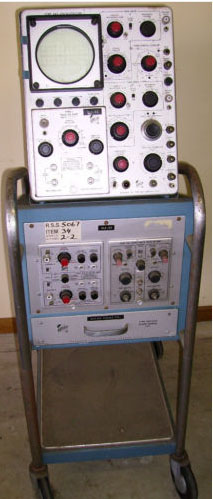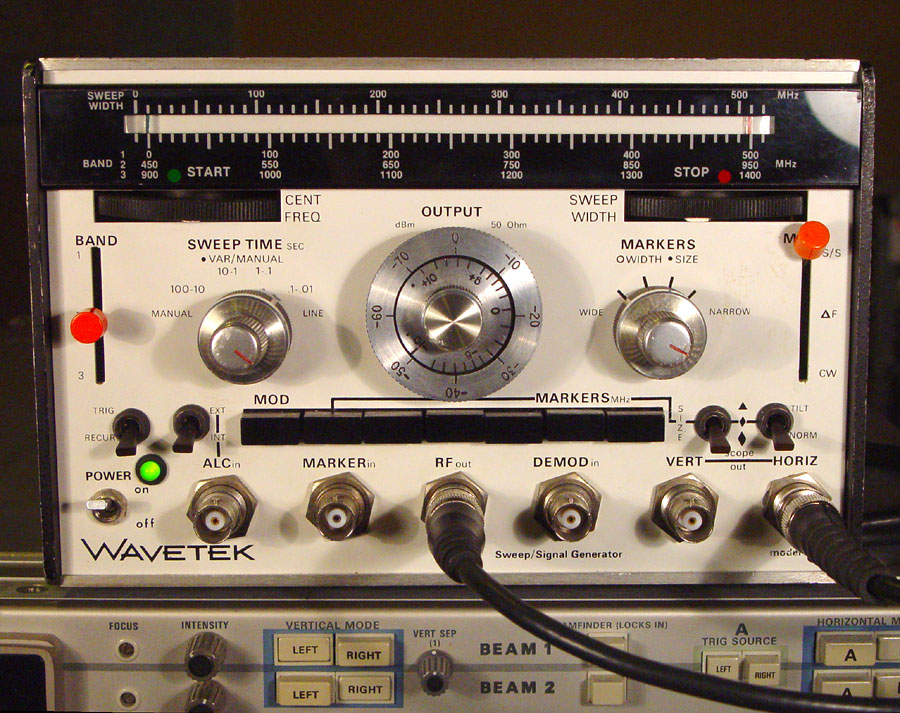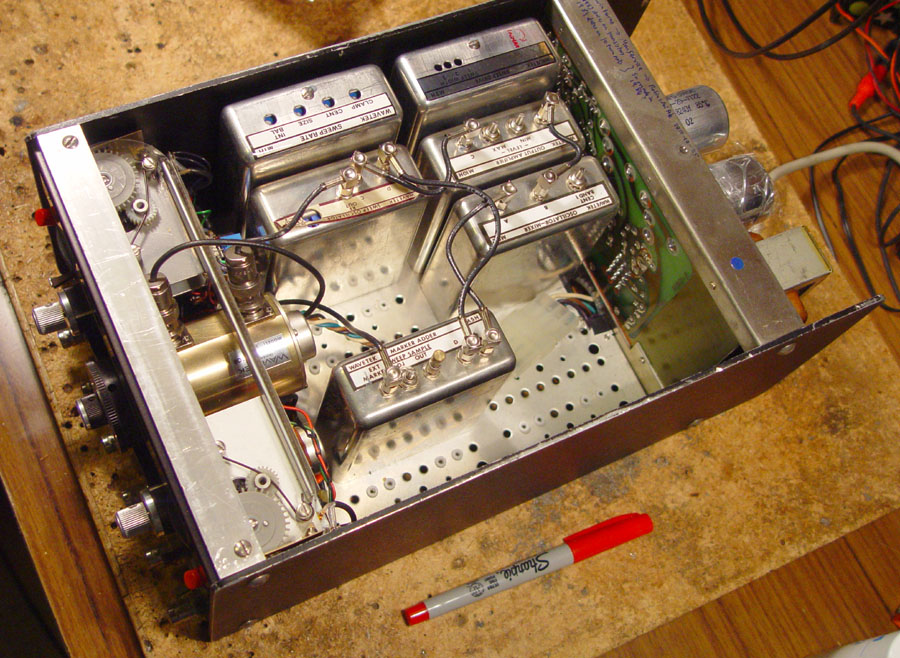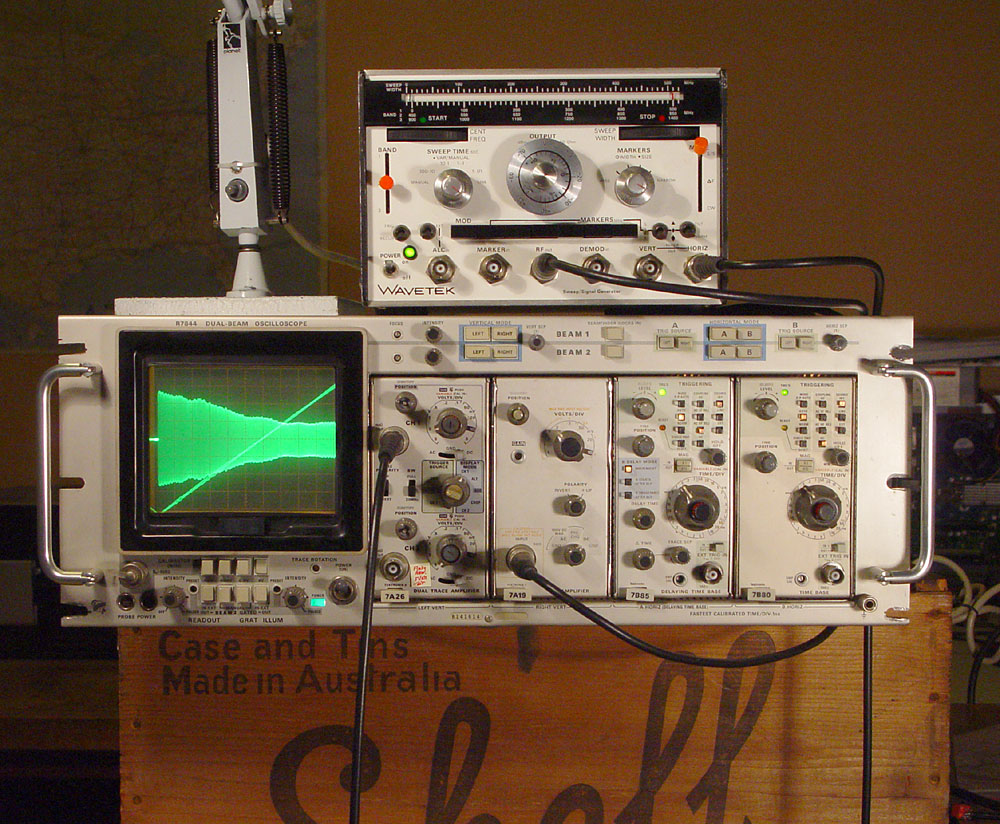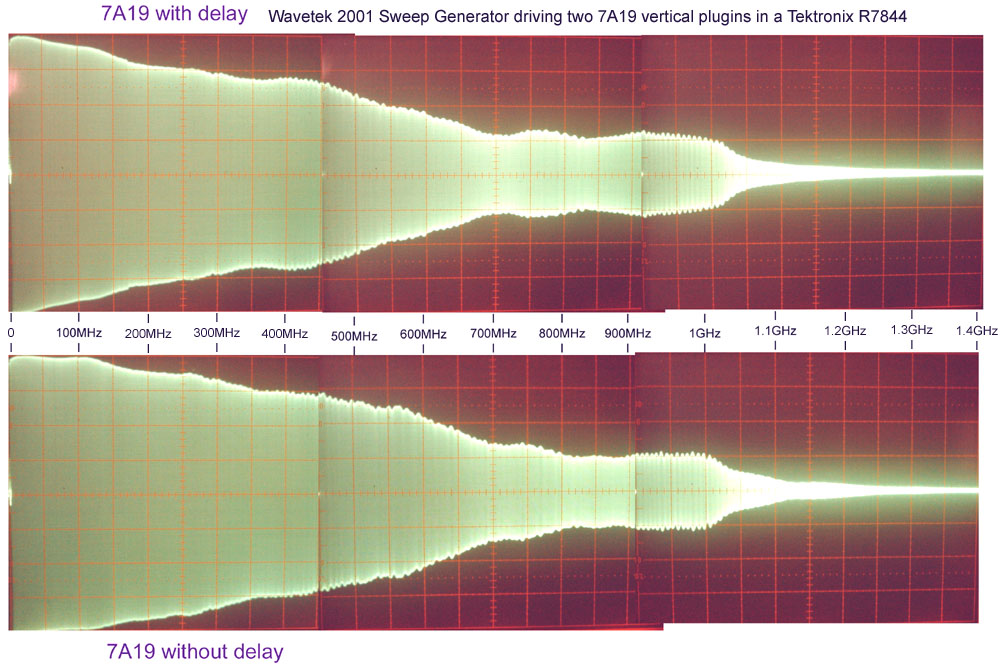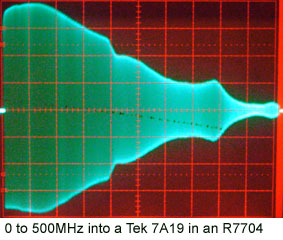R7704 rackmount 4 slot mainframe, also designed around 1972. ~175MHz. (Frequency response info is at the end of this page.)
7A19 x 2 vertical plugins. 50 ohm input, response to ~500MHz, depending on the mainframe. One has a variable delay line.
7A26 x 2 vertical plugins. 1M input, dual input, so a single beam in the R7844 can become a dual trace scope on its own. With two of these, the machine has four traces.
7B85 delaying timebase.
7B80 delayed timebase.
These can operate independently, or the 7B85 can control when the 7B80 is triggered. The 7B85 can trigger the 7B80 after a given delay (using a 10 turn pot) or it can enable the 7B80 to trigger itself once from its own trigger source after this delay. The 7B85 has another 10 turn pot which provides a second brighter spot range on the trace (the delay system produces the first spot or range), for the purpose of measuring elapsed time. The number is displayed on the lower part of the screen when the digital readout system is turned on. I have it turned off in the photos below, since its operation detracts from beam 2 - it uses beam 2 intermittently to write the numbers and letters at the top and bottom of the screen.
Type 585 valve oscilloscope, designed in 1959. This is in Adelaide. We will pick it up later this year. This has two plugins and a Scope-mobile!
